Body

How to Time Travel, 2024.
How to Time Travel
How to Time Travel presents a series of commissioned and selected works that explore notions of estrangement and displacement and propose ways in which the dimension of time conditions re-orientation and belonging. The participating artists, hailing from various trajectories and working across multiple disciplines and mediums, were invited to propose works that act as homing devices, defined as vehicles, instruments, rituals, or tools for navigation and orientation.
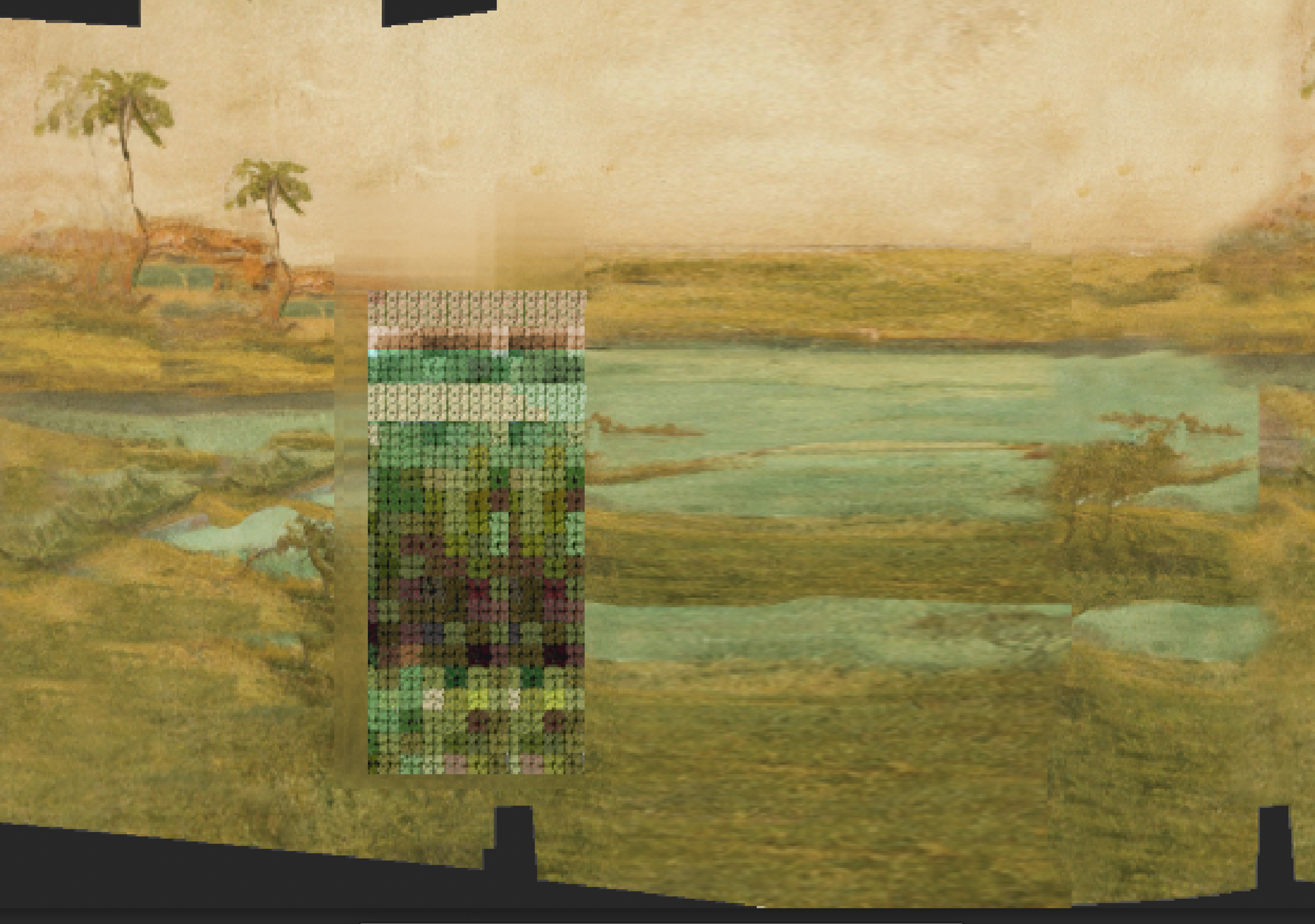
Nour Bishouty — tall grasses small bushes 2, 2024. In progress.
The works explore an expanded notion of home — one that transcends the physical and spatial realm confined by national borders, and is instead understood as a vast terrain composed of lived experiences, encompassing all affinities and connections, sensations and sentiments, objects and emotions, as well as recollections and visions. Implicit in this definition is an introspection about the elements that tether us to the world and to one another.
In this sense, acts of approaching home — contemplating, seeking, finding, understanding, remembering, and imagining it — often encompass a non-linear movement through time that does not solely rely on nostalgia but also invites speculative visions for the future.
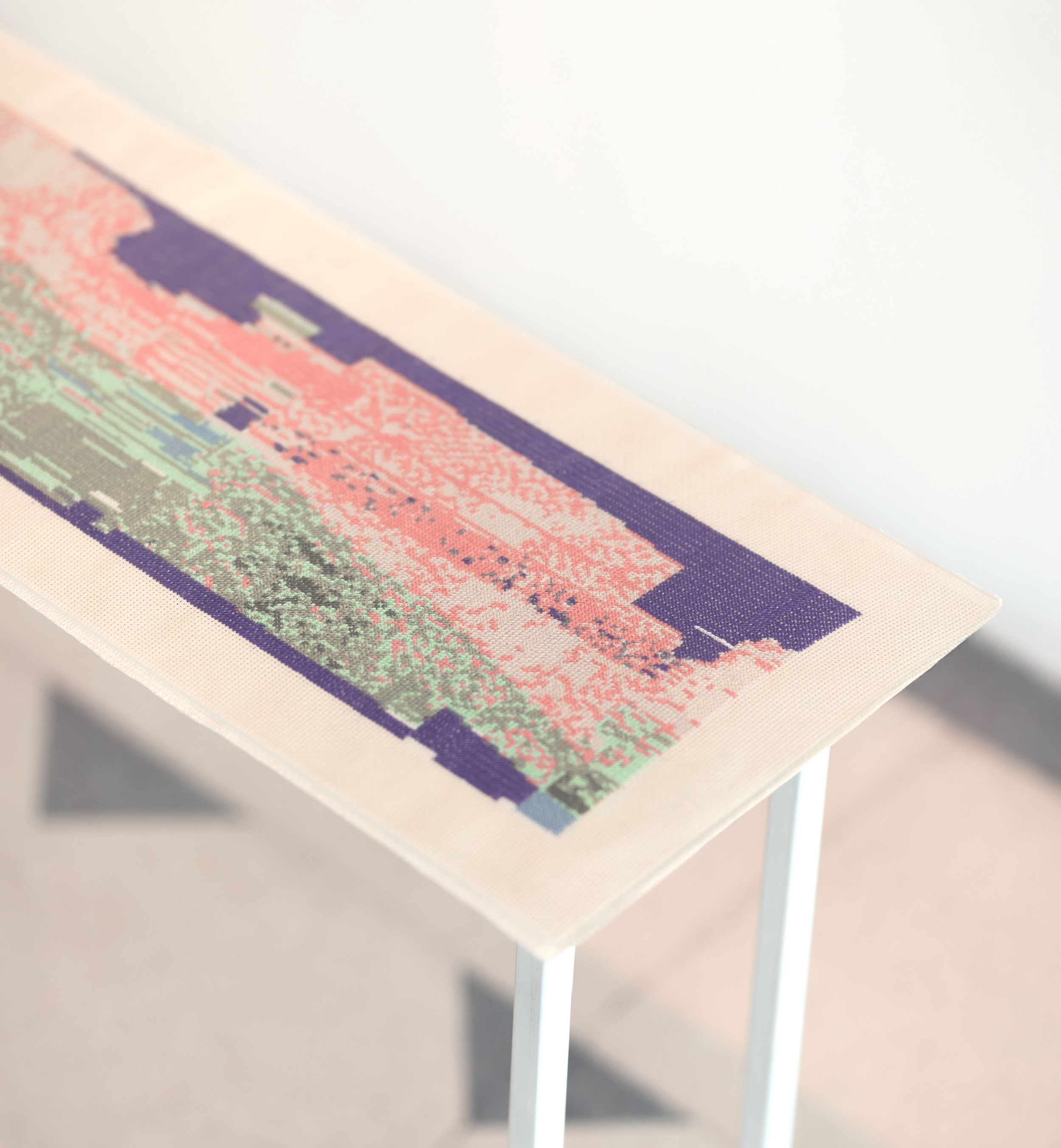
Nour Bishouty — tall grasses small bushes 2, 2024
In this work, the artist considers how the act of borrowing an object from an archive — namely, a landscape painting called Al Wadi made by her father, Ghassan Bishouty, in the early ‘80s — automatically remolds and distorts it into something else that can only be experienced in the present. This transformative act of extracting from the archive irreversibly alters the original object to a point of no return, or perhaps destroys it.
Punctuated stitches forcibly blend a dim artificial color palette, creating a murky depth where irregularities interrupt the horizontal plane, resembling scan lines, mirrored shapes, or posterization. The landscape of home is never fully revealed, but rather, emerges incrementally.
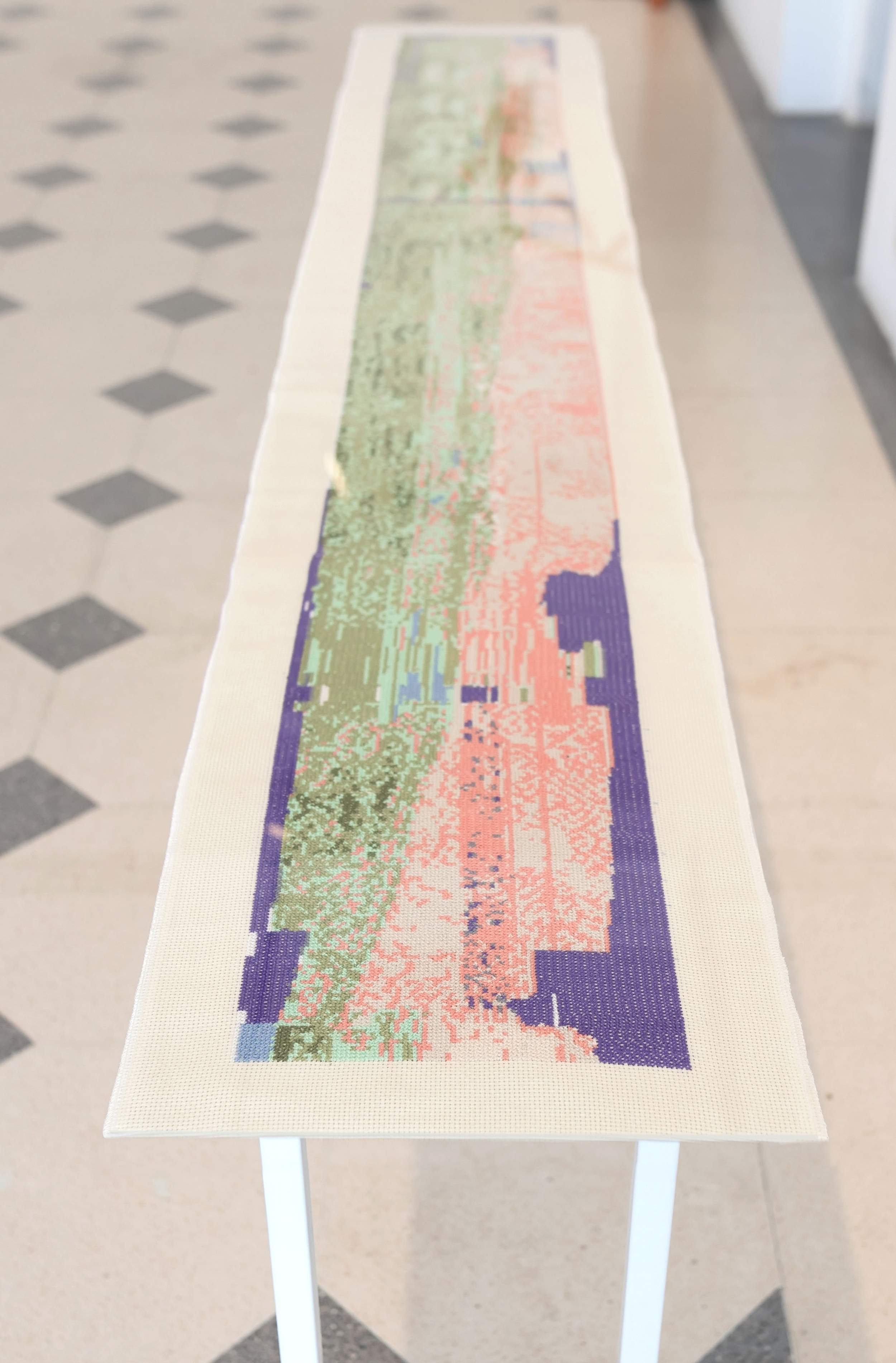
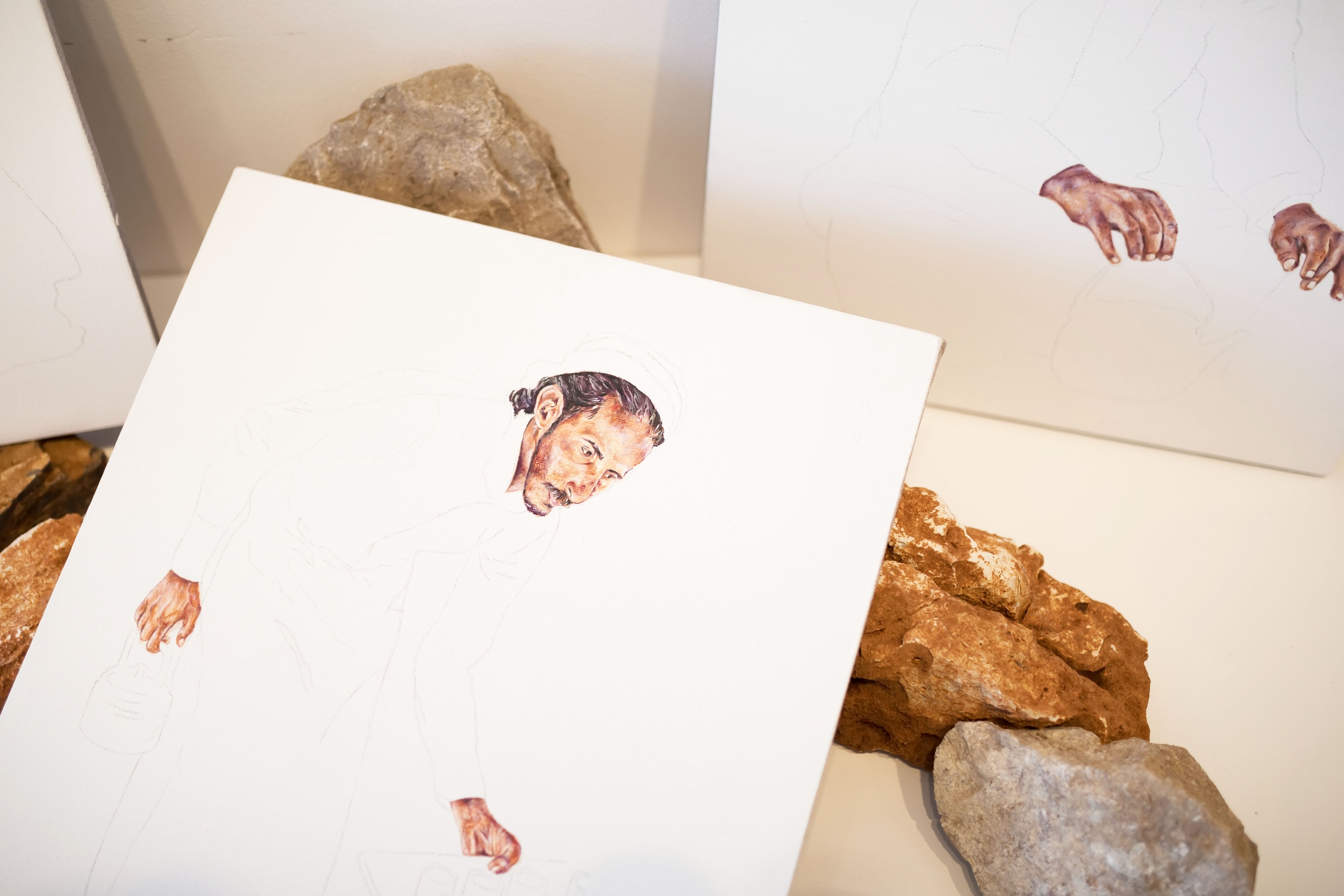

Shireen Mufti — Missing Pieces, 2023.
As a consequence of urban migration, the way of life in the Jordanian Badia is under the threat of silent erasure. The four canvases depict unfinished portraits and scenes of daily Bedouin life, where the intentional omission of cultural objects, tools, and contextual elements invites contemplation on nationally celebrated and iconized images which have been extracted from their original context and reduced to fragments or representations incapable of genuinely embodying their origins.
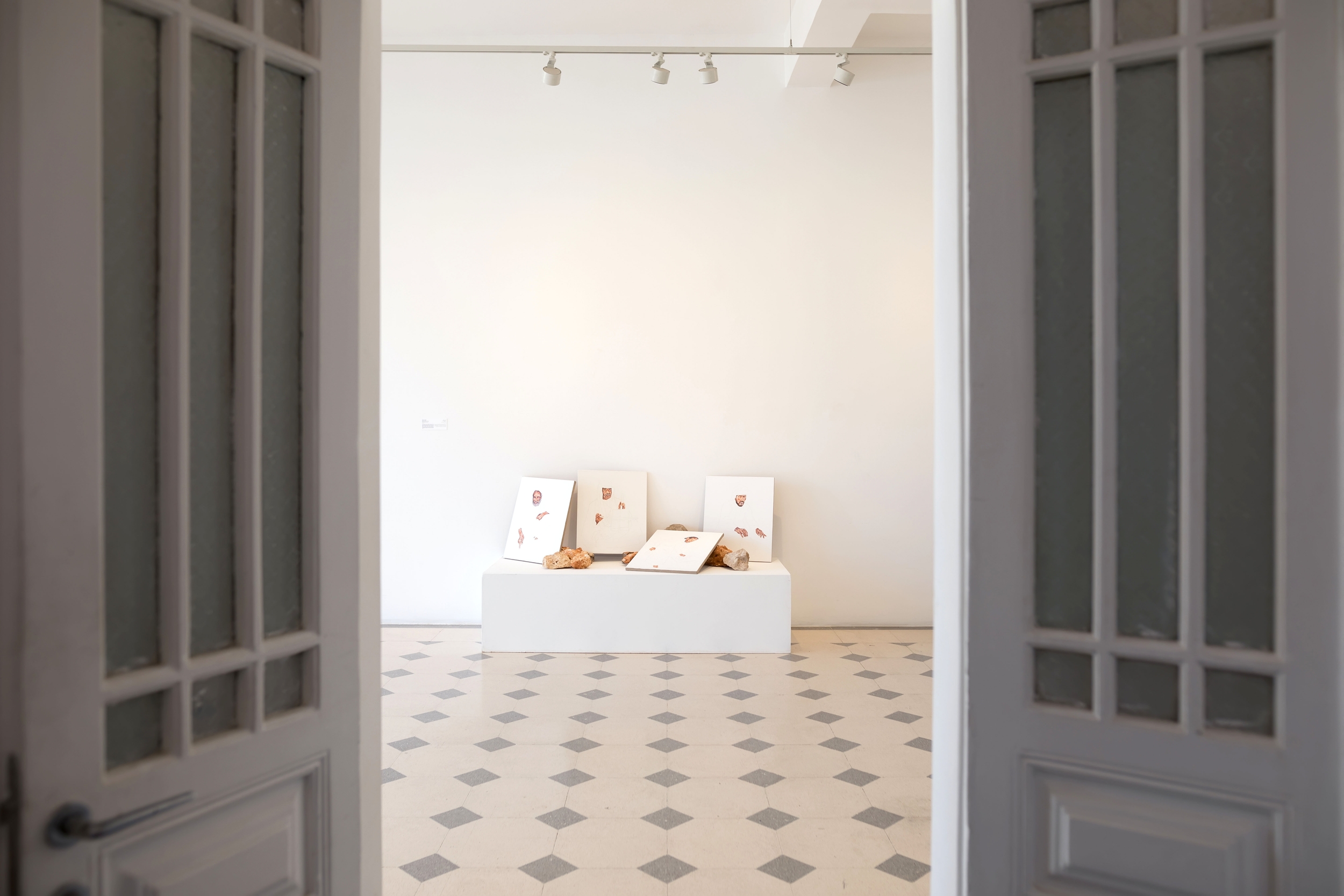
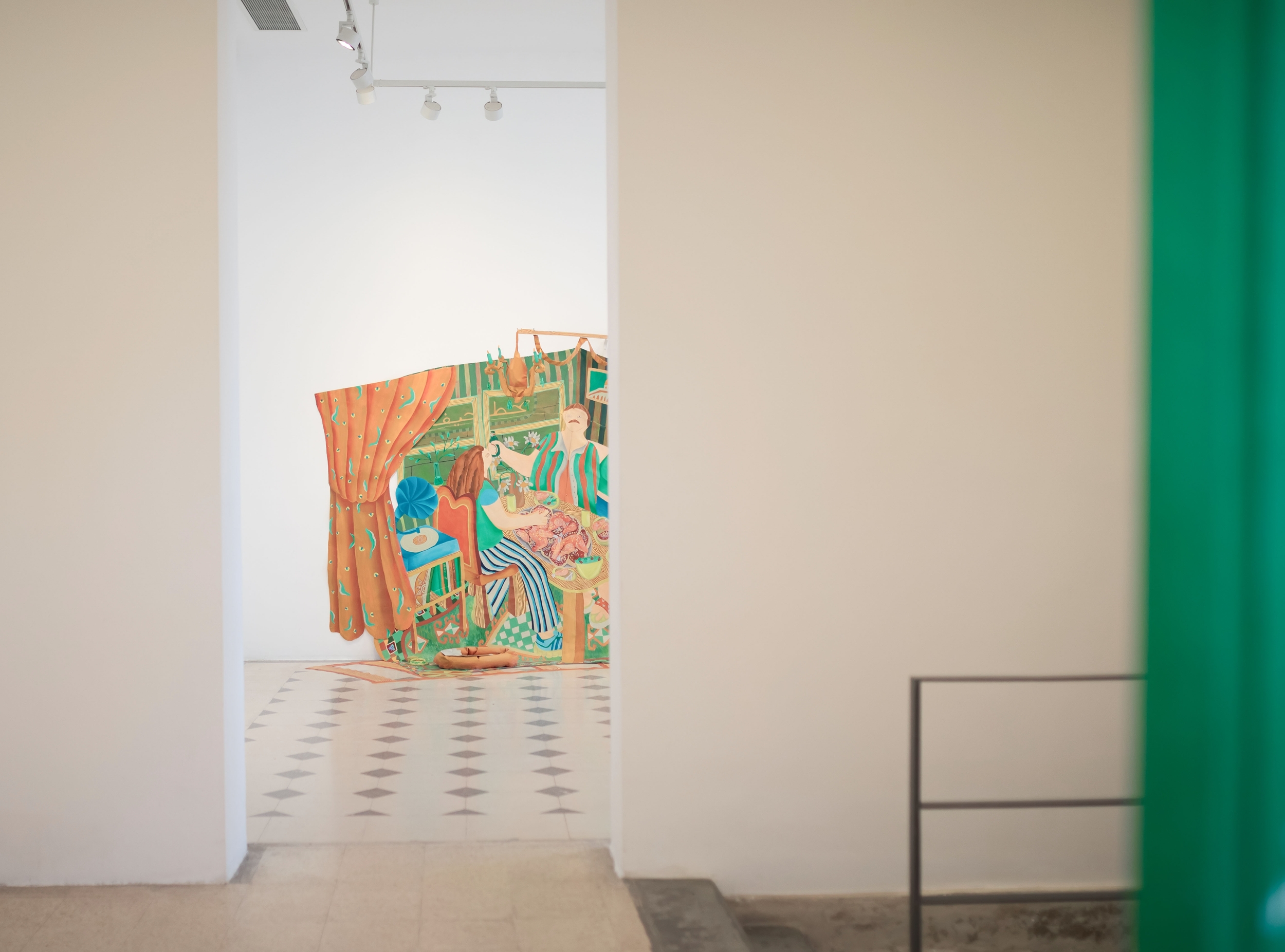
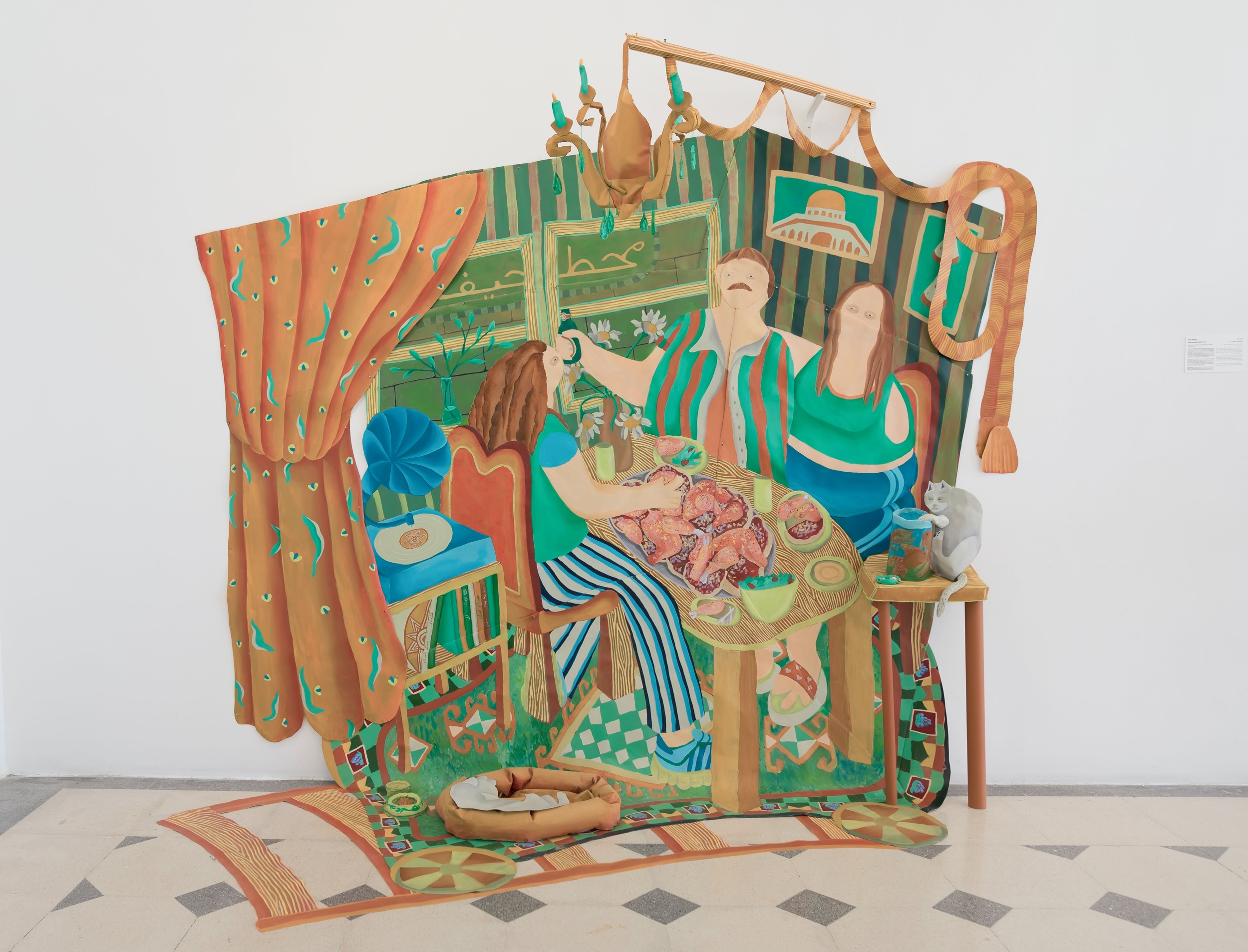
Noor Bseiso — Approaching Haifa, 2023.
Approaching Haifa is a visual representation that encapsulates an imaginary realm that has never materialized. Referencing the Hejaz Railway, the scene recalls elements of the unrestricted movement and interconnectedness that existed within our region prior to the current colonial framework, in an era devoid of borders and the historical atrocities associated with them: displacement, genocide, settler colonialism, and proxy wars, all of which have destabilized our physical homes.



Tamara Kalo — Olive Leaves Memories, 2024.
Olive Leaves Memories is a folding book that pays homage to the olive tree in a time when unfolding violence has impeded what should have been a sacred harvest season. The handmade book holds space for the olive tree and recalls its stories through a visual record of its traces and marks. By embedding the leaves within recycled plastic and using them to form photograms, it is a multifaceted and collaborative endeavor between the artist and the olive tree. The book itself is bound with threads dyed with pigment extracted from the olive leaves and is a call to listen to the land and its memories.

Mazen Kerbaj — Starry Night, 2006.
Starry Night is a sound piece recorded in 2006 during the bombing of Beirut by the Israeli Air Force. On the night of 15-16 July 2006, with bombs falling over the city, Mazen set up his minidisc recorder on the balcony of his Beirut apartment and started recording, while the city was being bombarded outside. The result was an acoustic encounter bordering on the absurd: a duet between the improvised sounds of the trumpet and live bomb explosions. The piece serves as a time capsule, capturing the sonic landscape of a home during live bombardment.

Bady Dalloul — Ahmad the Japanese, 2021. Video Stills.
Ahmad the Japanese is a film composed of a collage of scenes from the daily life of an archetypal fictional character, generically called Ahmad, as he emigrates from the Arab world to Japan. Filmed by Dalloul during his artist residency in Kyoto during the COVID-19 pandemic, the work intends to embody the complicated histories of immigration and cultural mixing. Being himself a French artist who grew up in Paris to Syrian parents, Dalloul purposefully places himself in an unfamiliar culture, becoming gaijin, or foreign, in the hopes of understanding the alienating journey of his parents and countless other migrants.
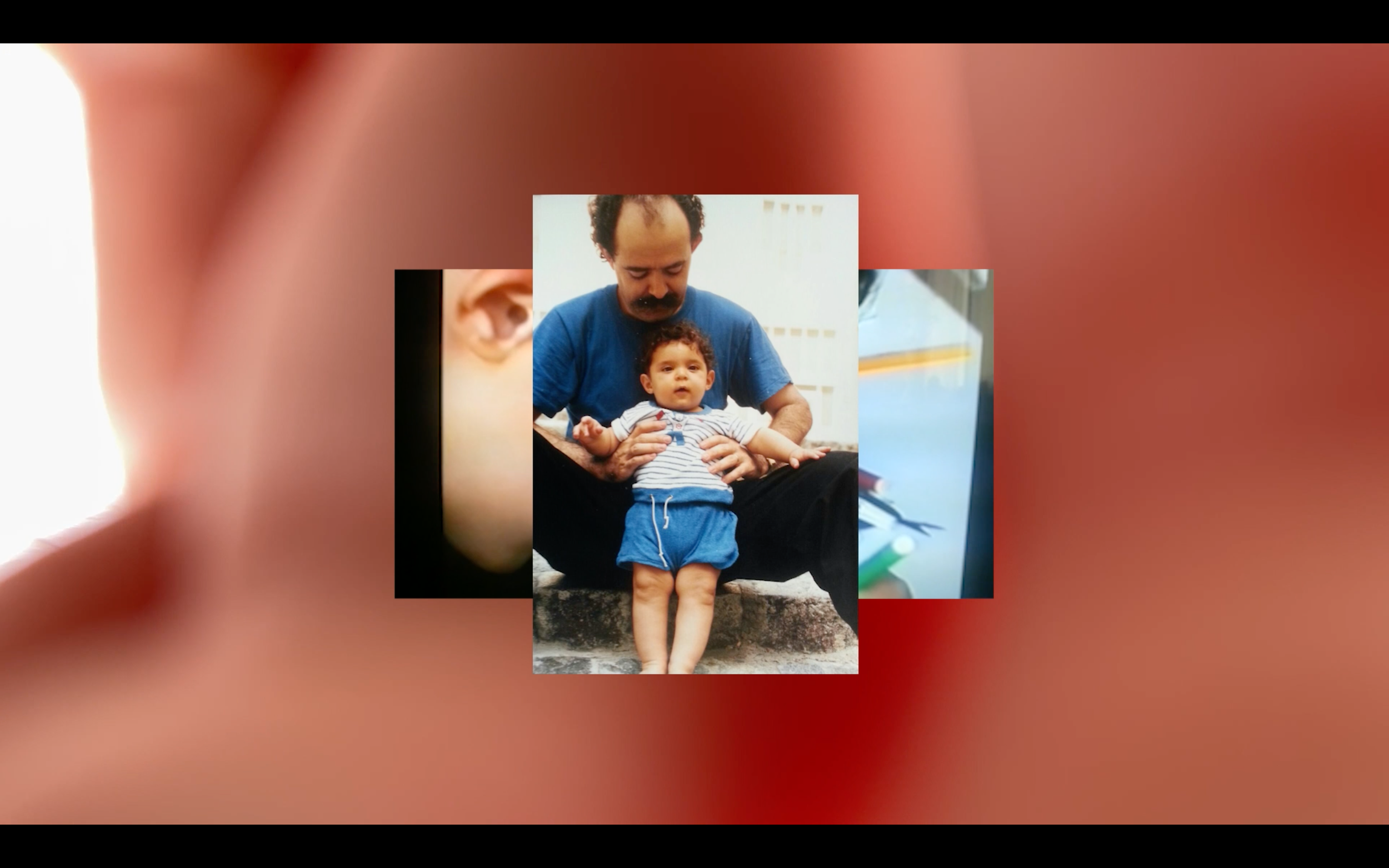
While the resulting works manifest as tangible objects — a reconstructed or deconstructed painting, a deck of cards, or a book — their journeys involve an interplay between fact and fiction; the protagonist of their time-bending narratives often being an imagined or reconstructed archetypal figure such as an olive tree, a distant sound, a father’s painting, or a grandmother’s prayers and stories.
The works are thus derived from a layering of real and made-up worlds where historical facts are altered, embellished, or intentionally omitted, and where lived experiences are narrated and re-narrated, manipulated, or made-up altogether.
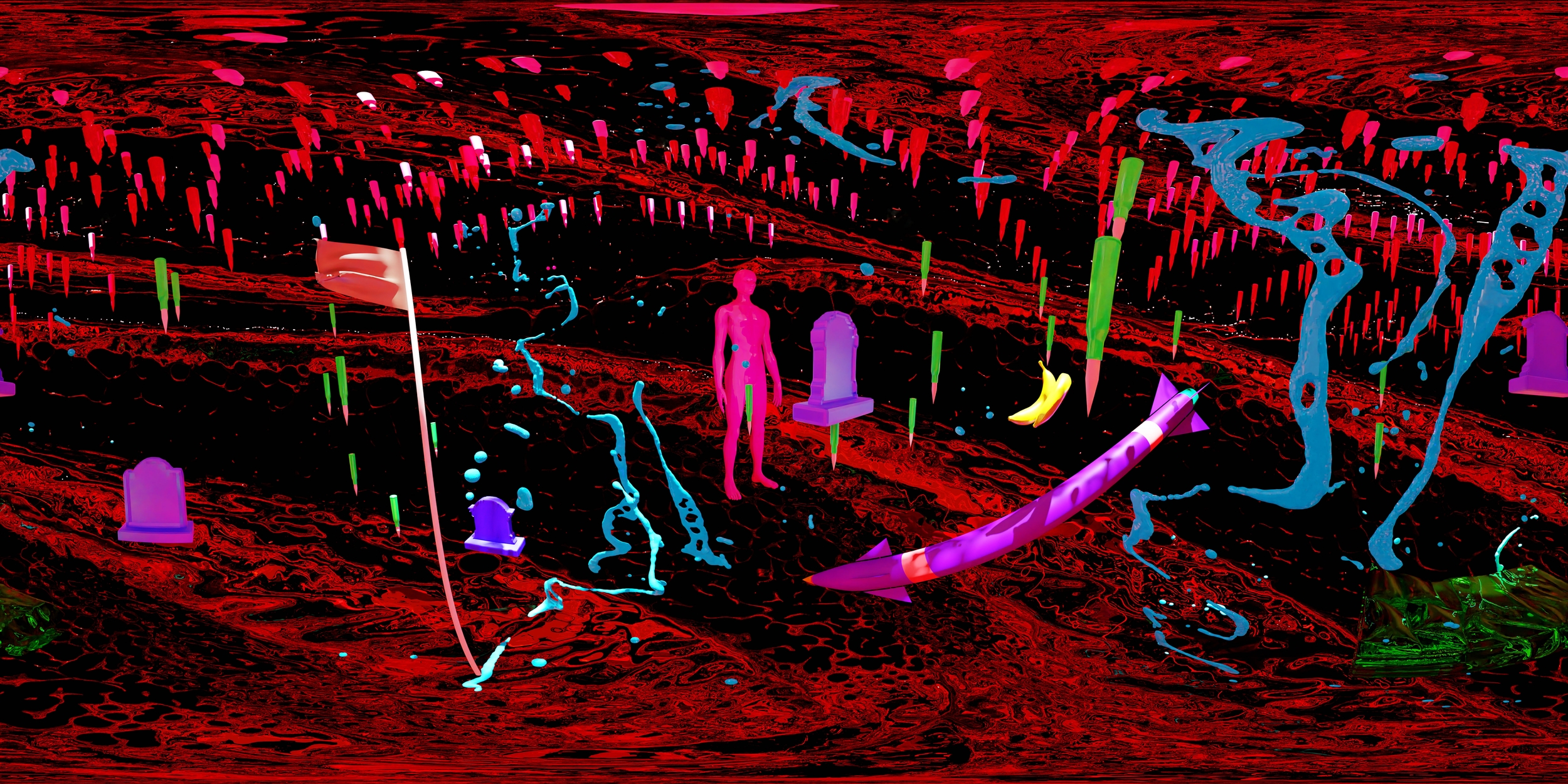
Hescham Alkarshan — MetaHome, 2021. Image still.

Hescham Alkarshan — MetaHome, 2021.
MetaHome is a journey of crystalised bedtime stories that transcend the boundaries of time and borders. As you spirally ebb and flow, you bear witness to an imagined, futuristic, circus-like utopia that attaches itself to past tragic realities. Fragments of memories, familial millstones, and unrealistically colorful symbols, which depict war stories and narratives of displacement or uprooting are all scattered around inside a tornado that takes you back to time zero in an infinite loop of searching for home.


Raafat Majzoub — DUA EXPRESS, 2024.
A dua is a prayer, a manifestation, a projection, and words cast into the future. DUA EXPRESS is an amalgamation of the Arab world’s indigenous forms of speculative fiction, and thus reclaims a transgenerational power for imagining the seemingly impossible. In its first edition, the deck comprises 78 bilingual cards containing common words and themes that have been extracted from a treasure trove of ancestral prayers—such as fate, safety, and fortune. The deck is designed for intuitive use and serves as a versatile tool for daily guidance, mutual storytelling, time travel, as well as personal and collective manifestation.
